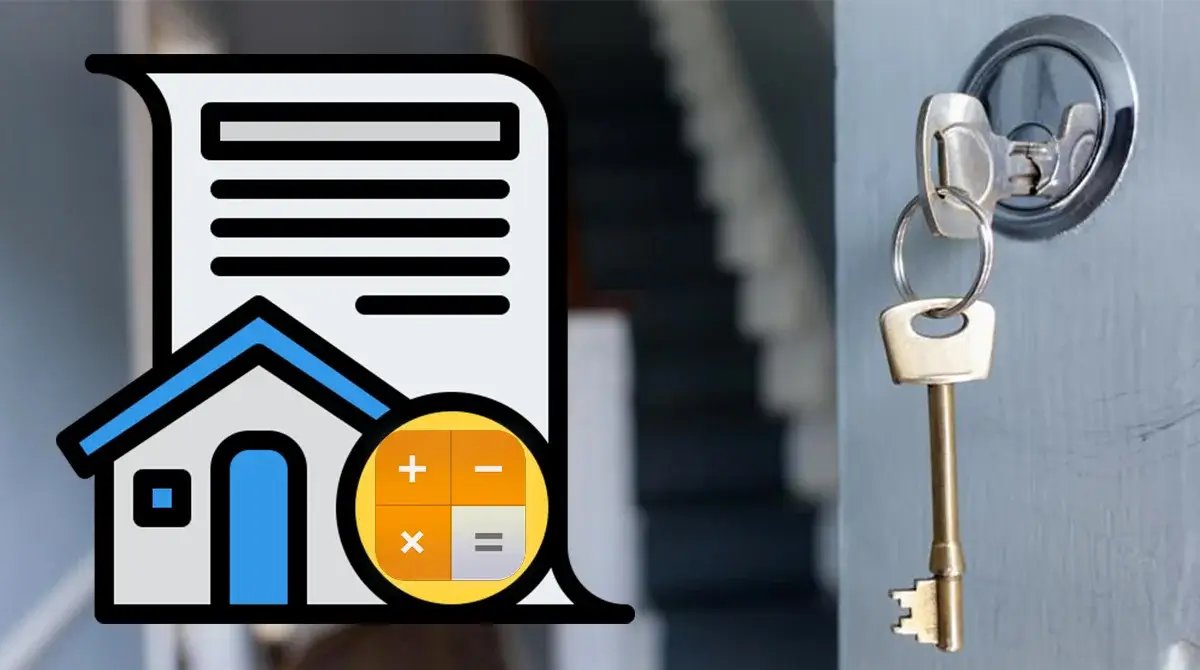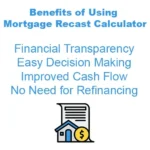Introduction
A mortgage recast calculator is a specialized tool that allows homeowners to estimate the financial benefits of recasting their mortgage. Recasting, also known as re-amortizing, is an often-overlooked option that can potentially save homeowners thousands of dollars in interest over the life of a loan. Unlike refinancing, a recast doesn’t require obtaining a new loan but involves making a lump-sum payment toward the mortgage principal and then recalculating the monthly payments based on the remaining balance.
Understanding how a mortgage recast calculator works, what factors influence its results, and how recasting compares to other mortgage management options are essential for any homeowner looking to optimize their financial strategy. This Tech Bonafide article will explore these areas in detail, including the advantages, disadvantages and common scenarios for using a mortgage recast calculator.
Mortgage Recast
Before diving into the specifics of a mortgage recast calculator, it’s important to have a clear understanding of what a mortgage recast is.
A mortgage recast is when a borrower makes a substantial lump-sum payment toward their remaining mortgage principal and the lender recalculates the loan’s monthly payments based on the new, reduced balance.
The interest rate, loan term and other conditions remain the same, but since the principal balance is lower, the monthly payments are reduced. This is different from refinancing, where the borrower takes out a new loan with different terms, interest rates and often new fees.
Working of Mortgage Recast Calculator
A mortgage recast calculator allows homeowners to input specific variables related to their loan and potential lump-sum payment. The calculator then estimates how much the monthly payments will decrease and how much interest savings can be realized over the remaining term of the loan.
Here are the basic components that are typically included in a mortgage recast calculator:
Key Components
- Current Loan Balance: The first thing a mortgage recast calculator requires is the remaining loan balance. This is how much you still owe on your mortgage. For instance, if you’ve been paying a $300,000 mortgage for several years and have $200,000 left, that is your current loan balance. This number provides the foundation for calculating potential savings from a recast.
- Interest Rate: The interest rate is the cost of borrowing the money and is crucial in determining how much interest you’ll save by recasting the loan. Mortgage recasts only work with fixed-rate loans since adjustable-rate mortgages (ARMs) have fluctuating rates, which would make recasting calculations unreliable.
For example, if your mortgage has an interest rate of 4%, that rate remains constant both before and after the recast. However, since the principal balance is reduced after the lump-sum payment, the amount of interest you pay each month will decrease as well.
- Monthly Payment: Your current monthly payment is the amount you’re required to pay toward the mortgage, which includes both principal and interest. A mortgage recast calculator uses this figure to show how much it can drop post-recast.
For example, let’s say your current monthly payment is $1,500. After entering your lump-sum payment and other details, the calculator may show that your new monthly payment would be $1,200, reflecting the reduction in the principal amount.
- Remaining Loan Term: The remaining loan term is the time left until the loan matures. For example, if you originally took out a 30-year mortgage and have already paid it for 10 years, the remaining loan term is 20 years.
The remaining term is vital for a mortgage recast calculator because the longer you have left on your loan, the more interest savings you can potentially realize from making a lump-sum payment now. The new monthly payment is recalculated based on the existing term, not extended or shortened, which keeps the loan’s maturity date the same.
- Lump-Sum Payment: This is the extra amount of money you’re willing to pay upfront toward the principal. In a mortgage recast, this lump-sum payment can come from various sources, such as a tax refund, bonus, inheritance or savings. For instance, if you decide to pay an extra $20,000 on your mortgage principal, the recast calculator will adjust the monthly payment based on this reduced balance.
- New Monthly Payment: After entering all the above variables, the recast calculator will provide a new estimated monthly payment. This number reflects how much your mortgage payment will decrease as a result of the lump-sum payment.
For example, after a $20,000 payment on a $200,000 mortgage, your new monthly payment might drop from $1,500 to $1,350, depending on your interest rate and loan term. This reduced monthly payment can free up cash flow for other financial goals.
- Interest Savings: The most significant benefit of a mortgage recast is the potential interest savings. By paying down the principal balance earlier than scheduled, you reduce the amount on which interest is calculated, which can lead to substantial savings over time.
The mortgage recast calculator will show how much interest you’ll save by comparing the total interest paid over the life of the loan before and after the recast. For instance, recasting could save you $15,000 to $30,000 in interest, depending on the loan amount, interest rate and time remaining.
FYI: An air loan is a deceptive form of mortgage fraud where brokers fabricate both a borrower and a property. By creating false transactions, they mislead lenders into believing they are financing a legitimate purchase, allowing the fraudsters to illicitly profit.
Benefits of Using a Mortgage Recast Calculator
Using a mortgage recast calculator has several advantages for homeowners looking to make an informed decision:
- Financial Transparency: The calculator offers a transparent view of how a lump-sum payment affects your mortgage, helping you assess whether recasting is a worthwhile strategy. It gives clear insights into the new monthly payments, the amount of interest saved and how much your overall financial situation could improve.
- Easy Decision-Making: Homeowners can use the results to determine if recasting is financially beneficial compared to other strategies like refinancing or investing the lump-sum payment elsewhere. With accurate figures from the calculator, you can make decisions aligned with your financial goals.
- Improved Cash Flow: One of the primary reasons homeowners choose to recast is to lower their monthly payments, freeing up cash flow for other expenses, investments or savings. The calculator helps you understand exactly how much extra money you could have each month after a recast.
- No Need for Refinancing: Recasting offers a simpler, less expensive alternative to refinancing. Refinancing often comes with closing costs, fees and the hassle of qualifying for a new loan. Recasting allows you to reduce your payments without changing the terms of your existing loan, making it a convenient option for homeowners who want to avoid the complexities of refinancing.
Disadvantages of Mortgage Recasting
While recasting can be a great tool for some homeowners, it’s not for everyone. Here are some potential drawbacks:
- Large Lump-Sum Payment Required: A mortgage recast requires a significant upfront payment, typically $5,000 or more. Not all homeowners have this amount readily available and for some, putting that money into other investments or financial goals may make more sense.
- No Change in Loan Term or Interest Rate: Unlike refinancing, a recast doesn’t reduce your interest rate or shorten your loan term. If your goal is to pay off your mortgage sooner or take advantage of lower rates, refinancing may be a better option.
- Not Available for All Loans: Some loans, particularly government-backed loans like FHA or VA loans, may not offer recasting as an option. Additionally, some lenders may charge a fee for recasting, typically ranging from $200 to $500, which should be factored into your decision.
- Tied-up cash: The lump sum is no longer accessible once applied toward the mortgage principal. You can’t easily access these funds unless through a home equity loan or selling the property.
Mortgage Recast Vs Refinancing
Here is a comparison between Recast and Refinancing:
| Feature | Mortgage Recast | Refinancing |
| Purpose | Lower monthly payments by paying down principal | Replace the current loan with one that has better terms |
| Loan Term | Remains the same | Can be extended or shortened |
| Interest Rate | Stays the same | Can be lowered (if refinancing to a lower rate) |
| Costs | Small recast fee ($200-$500) | Closing costs, application fees, etc. (~2-5% of loan) |
| Credit Check | Not required | Required |
| Eligibility | Requires lump-sum payment, not available for FHA/VA loans | Credit score, income, and home appraisal are critical for approval |
| Monthly Payment Reduction | Based on new principal balance | Depends on new loan terms and interest rate |
| Upfront Lump Sum | Required (minimum $5,000 or more) | Not required |
| Availability | Limited to lenders that allow recasting | Widely available |
Application of Mortgage Recast Calculator
There are several situations where using a mortgage recast calculator can be especially beneficial:
- Windfall Payments: If you’ve received a large sum of money, such as a tax refund, bonus or inheritance, a recast can help you put that money to work by reducing your monthly payments and overall interest costs.
- Downsizing: Homeowners who sell a property and purchase a new home with a smaller mortgage can use a recast to reduce their monthly payments without refinancing.
- Increased Cash Flow Needs: If your financial situation changes and you need to free up cash flow, a recast can help lower your monthly payments without the hassle of refinancing.
- After selling an investment property or downsizing your home and having extra cash to pay toward the mortgage.
- When you’re preparing for retirement and want to reduce financial burdens by lowering monthly housing expenses.
When Should You Recast a Mortgage?
- You have extra cash: If you come into a large sum of money and would prefer to reduce monthly payments without the hassle of refinancing.
- You want to lower monthly payments: Recasting lowers your payments while keeping the original loan term.
- You’re happy with your current interest rate: If the current interest rate is favorable, recasting is ideal as it leaves the rate unchanged.
- You want a cost-effective option: Recasting is generally cheaper than refinancing since it avoids high closing costs.
Input & Output Breakdown Table
| Input Variable | Description |
| Current Loan Balance | The remaining mortgage principal before the lump-sum payment. |
| Current Monthly Payment | The amount you currently pay monthly for the mortgage. |
| Interest Rate | The fixed interest rate on the mortgage loan. |
| Lump-Sum Payment | The additional amount you intend to pay to reduce the loan’s principal. |
| Remaining Loan Term | The time left on the mortgage (e.g., 15, 20, or 25 years). |
| Output Variable | Description |
| New Monthly Payment | The updated monthly mortgage payment after applying the lump sum. |
| Interest Savings | The total amount saved in interest payments over the life of the loan post-recast. |
| Total Payment Savings | Combined savings on interest and principal repayments after recasting. |
Conclusion
A mortgage recast calculator is a valuable tool for homeowners considering making a lump-sum payment toward their mortgage. It provides clear insights into how much their monthly payments will decrease and how much interest they can save over the life of their loan. While recasting is not for everyone, it can be a great option for those with a significant lump-sum payment who want to lower their monthly payments without the complexities and costs of refinancing. By using a mortgage recast calculator, homeowners can make informed decisions that align with their financial goals.




thanks for sharing